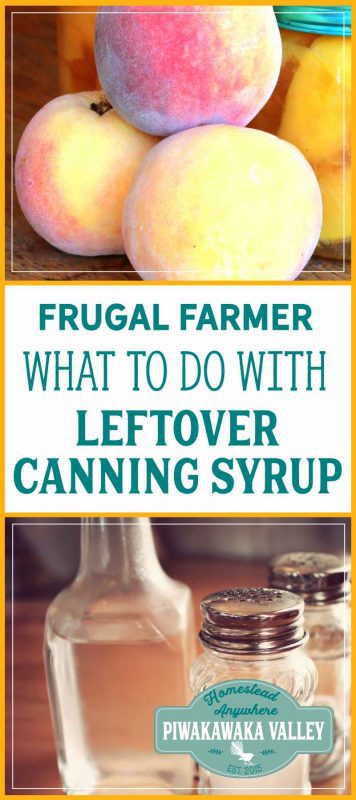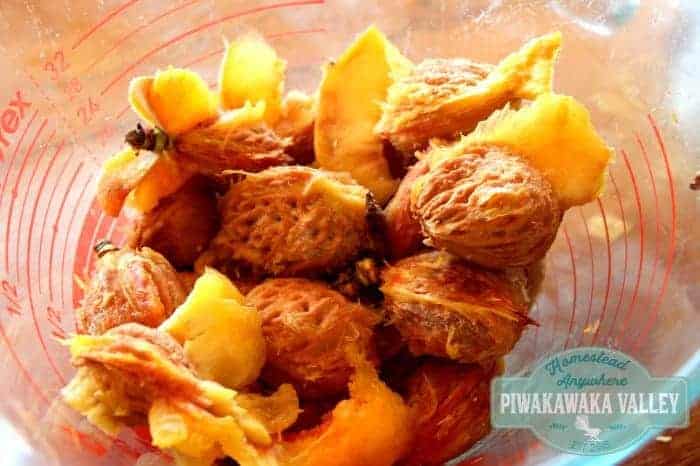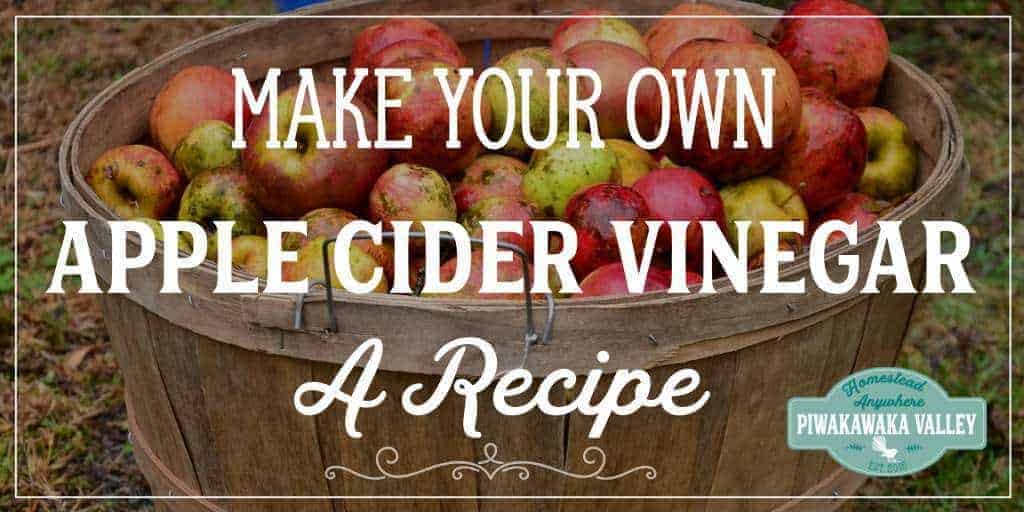This post was most recently updated on May 11th, 2021
Are you as stingy as me? When I preserve my fruit, I always feel bad about discarding leftover canning syrup. That was good sugar that I put in there. I paid for that!
Please read: This information is provided for educational purposes only and is not intended to treat, diagnose or prevent any disease. We encourage you to make your own health care decisions in partnership with a qualified health care professional.
This post contains affiliate links, this means at no extra cost to you, we make a commission from sales. Please read our Disclosure Statement
I have worked out a way of putting that left over syrup and fruit pieces to use. Fruit vinegar!
Related: Canning Fruit the Easy Way
This method is so very easy it doesn’t even really need a recipe. But I have made one for you anyway. If you don’t have leftover canning syrup, you can make this fruit vinegar anyway. Just use water and add sugar and fruit to it. I find that 1 cup of sugar to 1.5L/quarts of water works well.

Frugal Fruit Vinegar
This is how I use up my leftover canning syrup as well as pieces of fruit that don't make the cut.
Ingredients
- 1 Part Leftover canning syrup, I make mine 4C water 2C sugar
- 1 Part Water
- any pieces of fruit left over from the canning
- Any fruit pits with fruit still on them
- 1/2 Part Raw apple cider vinegar or other fruit vinegar
Instructions
- In a large jar / stainless steel pot or food safe bucket combine all the ingredients.
- Place a plate or weight on top of the fruit pieces/pits if you are using them to keep them submerged. If you are not using them, you can skip this step.
- Cover the container with a cloth secured with a rubber band or string to keep bugs and flies out but let the air in.
- Leave this mixture for 1-2 weeks. Strain out the fruit and pits and return the liquid to the jar.
- Re-cover the container with the cloth and leave the vinegar for 4 - 12 weeks or until it tastes like vinegar.
- Strain the vinegar into bottles and apply lids. Store at room temperature.
Notes
After the initial ferment the mixture will probably smell like alcohol, may be fizzy, and may grow white kahm yeast on the top. These are both OK things to happen. If you see grey / pink or fluffy growth you will have to discard the batch. At the end of the vinegar process you may well end up with brown floaty dust in the bottom of the vessel, and you may grow a disk shaped "mother". These are both natural things that show your mixture is alive and kicking exactly how it should be. You can use the mother to get your next batch started. As with any natural fermentation process, you need to trust your nose - if it ever smells putrid or very bad, discard it.
Fruit vinegar can easily be made from the peels and cores of apples and pears, as well as second grade fruits that you might be able to get from a farmers market, your own backyard, a friend or neighbor with fruit trees and berry vines. Bruised and smashed fruits are great for making vinegar and reducing waste, so ask your local grocery store if they can sell them to you for a discounted price. Ever freezer burned fruit, once thawed, works fine for making this recipe in any season.
The scum that forms while the vinegar ferments is also known as the ‘mother’. It is cellulose produced by acetic acid bacteria, which is ubiquitous in nature and present in all fermented, unpasteurized foods. The bacteria become present whenever ethanol is produced, which is what is happening when wild, airborne yeasts are feeding on the sugar in your fruit scraps.

If you see grey / pink or fluffy growth you will have to discard the batch.
At the end of the vinegar process you may well end up with brown floaty dust in the bottom of the vessel, and you may grow a disk shaped “mother”. These are both natural things that show your mixture is alive and kicking exactly how it should be. You can use the mother to get your next batch started.
As with any natural fermentation process, you need to trust your nose – if it ever smells putrid or very bad, discard it. – Preserves – Fermenting[/wpurp-searchable-recipe]









Hi
Thanks for great information for us. I make every year apple cider vinegar for me to drink after my lunch. I notice white fizzy stuff on the top of the vinegar, I remove with spoon and then drank my vinegar which I mix with hot water and teaspoon of maple syrup. I feel. ok. Thanks for the great information I love your knowledge for us to share with you.